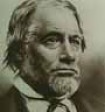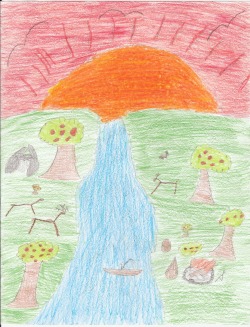Louisiana Purchase
By a treaty signed on Apr. 30, 1803, the United States purchased from France the Louisiana Territory, more than 2 million sq km (800,000 sq mi) of land extending from the Mississippi River to the Rocky Mountains. The price was 60 million francs, about $15 million; $11,250,000 was to be paid directly, with the balance to be covered by the assumption by the United States of French debts to American citizens.
In 1762, France had surrendered Louisiana to Spain, but by the secret Treaty of San Ildefonso the French had regained the area. Napoleon Bonaparte envisioned a great French empire in the New World, and he hoped to use the Mississippi Valley as a food and trade center to supply the island of Hispaniola, which was to be the heart of this empire. First, however, he had to restore French control of Hispaniola, where Haitian slaves under TOUSSAINT L'OUVERTURE had seized power. In 1802 a large army sent by Napoleon under his brother-in-law, Charles Leclerc, arrived on the island to suppress the Haitian rebellion. Despite some military success, the French lost thousands of soldiers, mainly to yellow fever, and Napoleon soon realized that Hispaniola must be abandoned. Without that island he had little use for Louisiana. Facing renewed war with Great Britain, he could not spare troops to defend the territory; he needed funds, moreover, to support his military ventures in Europe. Accordingly, in April 1803 he offered to sell Louisiana to the United States.
Concerned about French intentions, President Thomas Jefferson had already sent James Monroe and Robert R. Livingston to Paris to negotiate the purchase of a potion of land on the lower Mississippi or, at least, a guarantee of free navigation on the river. Surprised and delighted by the French offer of the whole territory, they immediately negotiated the treaty.
Jefferson was overjoyed. At one stroke the United States would double its size, an enormous portion of land would be open to settlement, and the free navigation of the Mississippi would be assured. Although the Constitution did not specifically empower the federal government to acquire new territory by treaty, Jefferson concluded that the practical benefits to the nation far outweighed the possible violation of the Constitution. The Senate concurred with this decision and voted ratification on Oct. 20, 1803. The Spanish, who had never given up physical possession of Louisiana to the French, did so in a ceremony at New Orleans on Nov. 30, 1803. In a second ceremony, on Dec. 20, 1803, the French turned Louisiana over to the United States.
Aquisition of Texas
The Texas Revolution or Texas War of Independence was fought from October 2, 1835 to April 21, 1836 between Mexico and the Texas portion of the Mexican state Coahuila y Tejas. It was a war for the Louisiana Purchase. When the war started Mexico was already outnubered. We had 6,500 and Mexico only had 2,000. Many people died in the war, but even though we had more people more mexicans died. 1500 Mexicans were killed or badly injured, and only 700 Texans were killed or badly wounded.
One of the most famous battles was the Alamo. The Alamo was a Catholic church which sometime served as a home to missionares, or a fort to soldiers on some ocasions. In this case it was are fort. The Alamo took place from February 23 – March 6, 1836. It is very famous because it was a great battle in which the texans were outnumbered by the Mexicans. We were going aginst 2,400 people when we only had about 260. In the morning on March 6 the Mexican army launched an assault on the Alamo. The Texians repulsed two attacks, but were unable to fend off a third. As Mexican soldiers scaled the walls, most of the Texian soldiers retreated into the long barracks or the chapel. Several small groups who were unable to reach these points attempted to escape and were killed outside the walls by the waiting Mexican cavalry. The Mexican soldiers fought room-to-room and soon had control over the Alamo. “Remember the Alamo“ became a battle cry for soldiers.
The War was won at the battle of San Jactino. Hundreds of Mexican soldiers were killed or captured, while only nine Texans died. Santa Anna, the President of Mexico, was captured the following day and held as a prisoner of war. Three weeks later he signed the peace Treaties of Valesco. The Republic of Texas was free from war at last.
Aquisition of Oregon
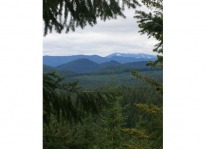
By 1500s a bunch of Native American people were living in Oregon. These people were called Chinook, Klamath, Bannock, Paiute and Modoc they lived in western Oregon. The Nez Perce also lived there and bred the first Appaloosa horses in the world.In the 1540s, a Spanish explorer was the first person beside the Indians to see for the first time what Oregon looked liked. Oregon is a state by the Pacific Coast of the United States it is known for it vast forests. It has evergreen trees. Forest covers most of the state. The state of Oregon takes up about tenth of the timber. The rough prettiness of Oregon has mountains and a beautiful seacoast the forest area.
The colonist did not get to explore it when the British arrived in the 1770s. This was because Great Britain said that they owned the country in the area of Oregon. That included the area from Alaska to California. The colonist has to get the area of Oregon from the British.
After the territory was bought settlers started moving there on what was known as the Oregon Trail. You can click on the words to follow the link to more information.
Aquisition of California
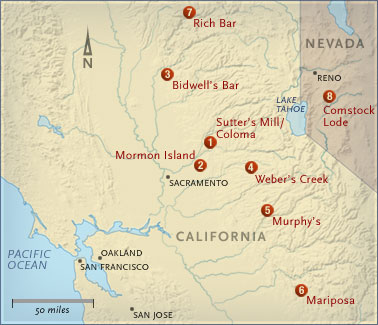
Gold Rush and the development of mining towns
Around 1846 the number of people of California was about two hundred thousand Indians, six thousand Mexicans and probably two-hundred Americans. War against Mexico been started in May, 1845, and by now General Taylor had won the battles of Palo Alto and Resaca de la Palma, and have required the surrender of Monterey. As these operation were leading the United States forces to the express accomplishment of their work in Mexico proper, other actions were underway. In 1848 California and New Mexico were ceded to the United States. In the mid 1800’s gold was found in the rivers of western North America. Some people didn’t believe the reports of gold. Many people headed west. They were called prospectors. Due to this gold rush California’s population was higher. A lot of people were convinced that there really was gold. James Marshall was the first newcomer to find gold.
er they hole of hostilities in the valley of the Rio Grande (March, 1846), in the middle of the expeditions which be organized by the central authorities was one to move next to and take control of California and New Mexico, two province in the northern part of the enemy's country. The power of this trip had been vested in General Stephen W. Kearney, and the force under his order had met at Fort Leavenworth; and measures had been made to insure its early on departure and its final success.
Follow this Link for a Timeline of the Gold Rush
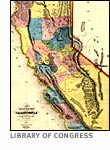
Learn about James Marshall and John Sutter and their Discovery by clicking the picture below.
